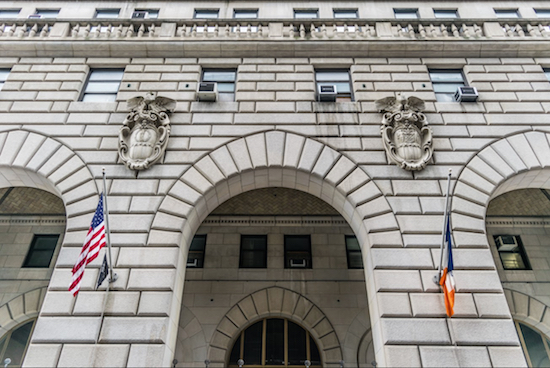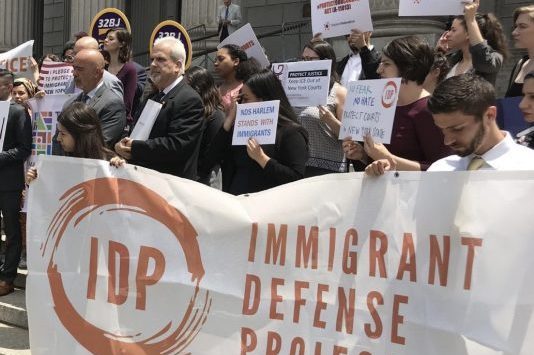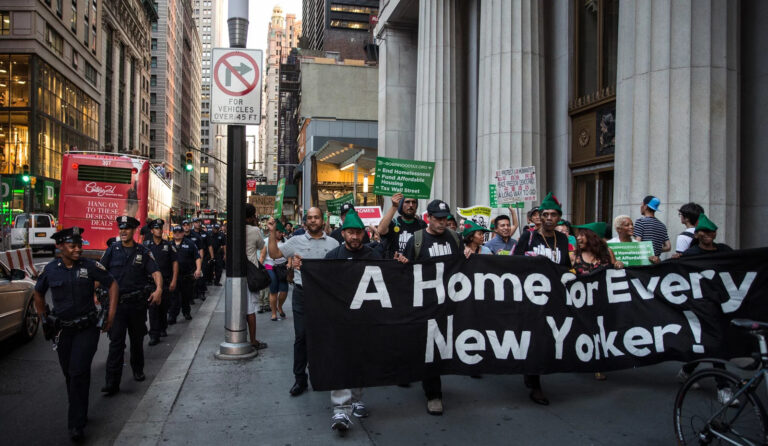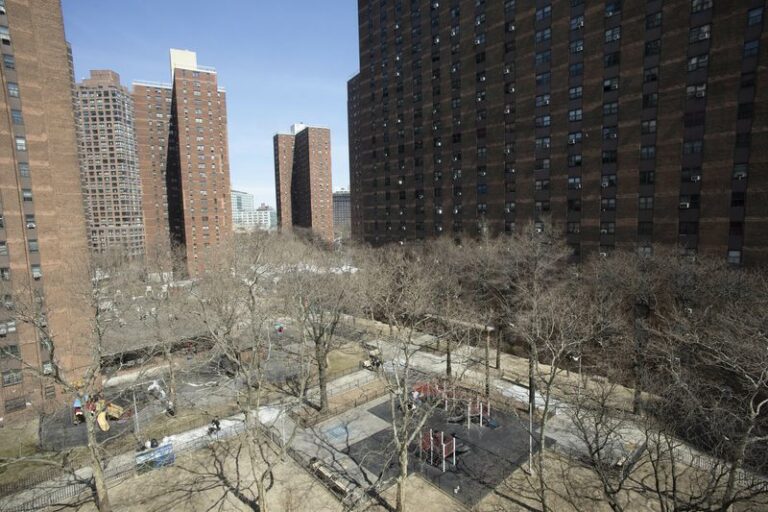
A young man and his mother had just left Brooklyn Criminal Court. A block from the courthouse, two plain-clothed Immigration and Customs Enforcement officers appeared out of nowhere, grabbed the man, and dragged him to an unmarked vehicle. Neither officer answered the mother’s panicked questions. “Who are you?”, she repeated thinking her son was being kidnapped. As she cried for help, a third officer appeared, shoved her against a wall, and repeatedly told her to “shut up.” The vehicle drove off and the mother was left sobbing on the street. She didn’t know what had happened until her son called from an ICE processing facility the following day.
This is only one of the many chilling stories recounted in a report by the Immigrant Defense Project released earlier this year titled “Safeguarding the Integrity of Our Courts.” While ICE raids in or around courthouses aren’t unheard of, the report notes a staggering 1,736% increase in courthouse operations in New York State since 2016.

The report is the culmination of a two-year project from the ICE Out of Our Courts Coalition–a group of more than a 100 District Attorney’s Offices, legal service providers, community-based organizations, law schools, and public defenders–that reveals how ICE raids in the state of New York are degrading the integrity of the courts.
While many have been working on this issue for the past two years, it has only recently been endorsed by Governor Andrew Cuomo who, in an interview with Northeast Public Radio in April, said that he wants “nothing to do to cooperate with ICE.” His support comes at a crucial time for the Protect Our Courts Act–an act that will prohibit the arrest of undocumented immigrants without a judicial warrant going to, returning from, and while at court. The act is currently being debated in both the State Senate and Assembly. If the legislation doesn’t pass, the Coalition is afraid that continued distrust in the court system will compromise public safety.
“The practice of ICE arresting people in our courthouses is something that gained popularity in the last two years,” says Sarah Rogerson, an Albany Law School professor and one of the legal scholars who contributed to the report. “When advocates noticed this sort of activity, particularly in Downstate courthouses, legal service providers realized that there was an issue that needed to be addressed immediately.”
On April 17, USC Chief of the Department of Public Safety Michael Magliano signed a policy protecting undocumented immigrants from ICE arrests without a judicial warrant within courthouses. In response, ICE is now staking those out due to appear in court and attempts to arrest them on their way to or from the courthouse.
“The court policy really only impacts the courthouse itself,” says Professor Rogerson. “The Protect Our Courts Act would help people who are on their way to and from court, which is now where a lot of those arrests are happening.”
ICE’s tactic is quite simple: look at the court docket to find a summary of all court proceedings for a specific day and cross-reference it with a deportation list.
“Any individual can go onto the court administration website and see when someone’s court case is coming up,” says Assemblywoman Michaelle Solages, a representative from the 22 district and one of the original sponsors of the bill. “ICE basically looks at the docket and references it. If there’s a match, they arrest them. What these federal agents are doing is they’re using our courts as bait. And they’re causing our immigrant community to go into the shadows.”
Anyone is a potential target–a person going to pay a parking fine, a domestic violence victim, or someone testifying against a gang member. According to Professor Rogerson, there’s no such thing as a standard case.
This ICE practice has created a chilling effect. Undocumented and documented immigrants alike are now afraid to go to court.
“People are losing confidence and trust in the court system because they’re afraid that if they go to seek justice they could be deported out of the country,” says Assemblywoman Solages.
Yatziri Tovar from the non-profit Make the Road New York, who also contributed to the report, echoes this concern.
“I’ve heard many stories that are just frightening,” says Tovar. “I can only imagine what it would feel like to go to a courthouse, probably seeking protection or paying a fine, and seeing ICE there. That’s not what it’s about. A courthouse should be a place to seek justice and folks shouldn’t be scared to do that.”
According to the report, oftentimes when victims of crimes file complaints with NYPD they give fake names, fake addresses, and fake phone numbers out of fear that ICE will somehow track them down. When their testimony is needed for grand jury, the NYPD cannot locate them. With no witnesses and no evidence, many perpetrators and abusers remain unpunished and threaten public safety. Even more troubling is the evidence showing that there’s reduced communication with law enforcement and increased fear of compliance with court orders.
When this issue first came to the attention of legal service providers and activists two years ago, the Coalition tried to use already existing legislation to push for broader protection of undocumented immigrants, but they were unsuccessful.
“The Department of Homeland Security has a longstanding policy against enforcing immigration law in certain places,” says Professor Rogerson. “There’s a series of memos called the Sensitive Location Policy that come from the government and that protect hospitals, churches, public protests, and schools from being targets of immigration enforcement. It was curious that courthouses weren’t included as a sensitive location.”
Professor Rogerson attempted to update the policy to include courthouses in November of 2018, but the Department of Homeland Security dismissed her concerns.
“They made it pretty explicit that they planned to continue the practice and that they didn’t consider enforcement in courthouses as covered by the Sensitive Location Policy,” says Professor Rogerson.
Once advocates realized there would be no cooperation from the federal government, they were prompted to mobilize the Coalition. According to Professor Rogerson, the Immigrant Defense Project took the lead in organizing the effort. Tovar added that there was extensive gathering of quantitative and qualitative data in order to demonstrate the full breadth of the negative effects. Moreover, community organizations disseminated information and educated their community members about their rights in the case of an encounter with ICE. Professor Rogerson describes the two-year process as a collaborative effort of a whole community.
“It became a multifaceted intervention that included academia, advocates, and lawyers,” she says.
This is not the first time this type of legislation was proposed. Assemblywoman Solages and State Senator Brad Hoylman sponsored a similar bill in June of last year. Although the bill managed to pass all the committees in the Assembly, it failed to gain support in the State Senate.
“We knew the reality,” says Assemblywoman Solages. “In 2018, we had a Republican State Senate and they were not interested in any legislation that would help our immigrant community. It’s as simple as that. I’m glad that voters now decided that they wanted a legislature that would actually work on this issue.”
Advocates are more hopeful this time around after the 2018 Midterm elections when Democrats secured majorities in both chambers. This optimism, however, withers away when there is mention of the federal government. It is no coincidence that ICE has grown increasingly bold in its operations throughout the country in the last two years. Since his election, President Trump has made it a point to radicalize the agency in order to further his anti-immigrant rhetoric.
Melanie Pineda, a junior at NYU and a U.S. citizen whose family members are undocumented, believes that this distrust between the justice system and the immigrant community has been heightened by President Trump. She believes that his policies have been passed in order to incite fear in both undocumented and documented immigrants, which creates an even bigger wedge between immigrants and the judicial system. For her, the system is driving away the very people that it’s supposed to be helping.
“The immigration system in the U.S. has been broken for decades,” says Pineda. “But now that Trump is basically taking it to an extreme, more and more media outlets are paying attention to that. We’re seeing more stories of law-abiding immigrants who go to court only to be arrested, and it’s horrifying to think that even when someone is ‘doing everything right’ they can still be discriminated against or arrested by our government. And that’s a powerful thing to see.”
The Protect Our Courts Act is currently sponsored by 47 Assembly Members and 17 State Senators. They have until the end of this year’s session in June to pass the legislation. Although the federal government seems set in its convictions, for now, even a sliver of support from the top politician in the State can rally support for the legislation that might prevent a future public safety crisis.
“Lady Justice is blind,” says Assemblywoman Solages. “She doesn’t care about your immigration status, socioeconomic status, or income. Everyone should have a right to justice. That’s what our country is built on.”
Jana Cholakovska



